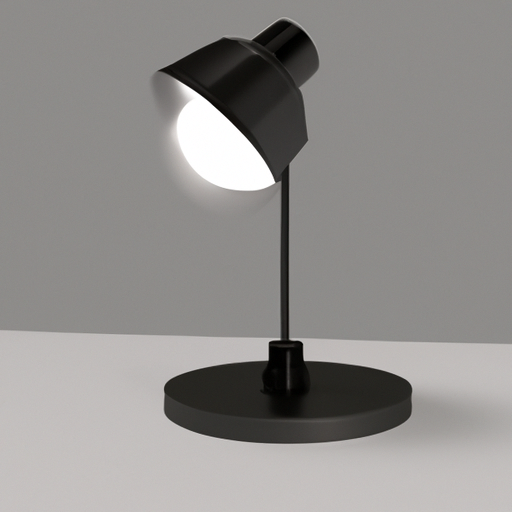
Visible light products have become increasingly popular in recent years, with more and more consumers looking for ways to enhance their home or office lighting. Mainstream visible light products offer a wide range of options to suit different needs and preferences, from smart bulbs to decorative lighting fixtures. In this article, we will explore the parameters that define mainstream visible light products and how they can be used to create a unique and personalized lighting experience.One of the key parameters that define mainstream visible light products is their compatibility with existing lighting systems. Many consumers are looking for products that can easily be integrated into their current setup without the need for extensive rewiring or installation. This is where smart bulbs and other connected lighting solutions come into play, offering users the ability to control their lights remotely through a smartphone app or voice commands.Another important parameter is the color temperature of the light emitted by the product. Color temperature is measured in Kelvin (K) and refers to the warmth or coolness of the light. Most mainstream visible light products offer a range of color temperatures to suit different moods and settings, from warm white for a cozy atmosphere to cool white for a more energizing and productive environment.Brightness is another key parameter to consider when choosing visible light products. The brightness of a light source is measured in lumens, with higher lumens indicating a brighter light. Mainstream visible light products typically offer a range of brightness levels to suit different needs, from dimmable bulbs for ambient lighting to high-intensity fixtures for task lighting.Energy efficiency is also an important parameter to consider when choosing visible light products. With the increasing focus on sustainability and energy conservation, many consumers are looking for products that are energy-efficient and environmentally friendly. LED lighting, in particular, has become a popular choice for its long lifespan and low energy consumption, making it a cost-effective and eco-friendly option for mainstream visible light products.In addition to these parameters, design and aesthetics play a significant role in the popularity of mainstream visible light products. Consumers are increasingly looking for lighting solutions that not only provide functionality but also enhance the overall look and feel of their space. From sleek and modern designs to vintage-inspired fixtures, there is a wide range of options available to suit different styles and preferences.One of the key advantages of mainstream visible light products is their versatility and adaptability. Whether you are looking to create a cozy and inviting atmosphere in your living room or a bright and energizing workspace in your office, there are visible light products available to suit your needs. With the ability to customize color temperature, brightness, and even control settings, consumers can easily create a personalized lighting experience that enhances their space and improves their overall well-being.In conclusion, mainstream visible light products offer a wide range of options to suit different needs and preferences, from smart bulbs to decorative lighting fixtures. By considering parameters such as compatibility, color temperature, brightness, energy efficiency, and design, consumers can choose visible light products that enhance their space and create a unique and personalized lighting experience. Whether you are looking to create a cozy ambiance in your home or a productive workspace in your office, there are visible light products available to help you achieve your lighting goals.

Ultraviolet (UV) light is a form of electromagnetic radiation that is invisible to the human eye. It is commonly used in various industries for sterilization, disinfection, and curing processes. In recent years, there has been a growing demand for UV products due to their effectiveness in killing bacteria, viruses, and other pathogens. However, in order to ensure the safety and efficacy of these products, there are certain standards that must be met.One of the most important product standards for UV products is the wavelength range. UV light is divided into three main categories based on wavelength: UV-A (315-400 nm), UV-B (280-315 nm), and UV-C (100-280 nm). UV-C light is the most effective for disinfection purposes as it has the shortest wavelength and highest energy. Therefore, UV products intended for sterilization and disinfection should emit UV-C light within the specified wavelength range.Another important product standard for UV products is the irradiance level. Irradiance refers to the amount of UV light that is emitted by a source and is typically measured in watts per square meter (W/m2). The irradiance level of a UV product should be sufficient to achieve the desired disinfection or curing effect. It is important to note that higher irradiance levels do not necessarily equate to better performance, as other factors such as exposure time and distance from the source also play a role.In addition to wavelength range and irradiance level, there are other product standards that must be met for UV products to ensure their safety and effectiveness. These include:1. Exposure time: The amount of time that an object or surface needs to be exposed to UV light in order to achieve the desired disinfection effect. This can vary depending on the type of pathogen being targeted and the intensity of the UV light.2. Safety features: UV products should be equipped with safety features such as automatic shut-off mechanisms, warning indicators, and protective shields to prevent accidental exposure to UV light.3. Compliance with regulatory requirements: UV products must comply with relevant regulatory standards and guidelines, such as those set forth by the Food and Drug Administration (FDA) or the International Electrotechnical Commission (IEC).4. Quality control measures: Manufacturers of UV products should implement quality control measures to ensure that their products meet the specified standards and perform as intended.Overall, product standards for UV products are essential to ensure their safety, efficacy, and reliability. By adhering to these standards, manufacturers can provide consumers with high-quality UV products that deliver the desired disinfection and curing effects. As the demand for UV products continues to grow, it is important for manufacturers to stay informed about the latest standards and regulations in order to meet the needs of their customers and maintain a competitive edge in the market.

Infrared radiation, also known as IR radiation, is a type of electromagnetic radiation that is invisible to the human eye. It has a longer wavelength than visible light, ranging from about 700 nanometers to 1 millimeter. Infrared radiation is commonly used in various applications, including heating, communication, and imaging.There are several mainstream models of infrared radiation that are used to describe its behavior and properties. These models help scientists and engineers understand how infrared radiation interacts with matter and how it can be utilized in different applications. In this article, we will discuss some of the most commonly used models of infrared radiation.1. Blackbody Radiation ModelThe blackbody radiation model is one of the most fundamental models of infrared radiation. It describes the radiation emitted by a perfect blackbody, which is an idealized object that absorbs all incident radiation and emits radiation at all wavelengths. According to this model, the intensity of radiation emitted by a blackbody at a given wavelength is determined by its temperature and follows a specific spectral distribution known as Planck's law.Planck's law describes the spectral radiance of a blackbody as a function of wavelength and temperature. It shows that the intensity of radiation increases with temperature and peaks at a specific wavelength determined by the temperature of the blackbody. This model is widely used in infrared spectroscopy and thermal imaging to analyze the radiation emitted by objects at different temperatures.2. Stefan-Boltzmann LawThe Stefan-Boltzmann law is another important model of infrared radiation that describes the total amount of radiation emitted by a blackbody at a given temperature. It states that the total power radiated by a blackbody is proportional to the fourth power of its temperature, as expressed by the equation:P = σT^4Where P is the total power radiated, σ is the Stefan-Boltzmann constant, and T is the temperature of the blackbody. This law is used to calculate the total amount of infrared radiation emitted by objects at different temperatures and is essential for understanding the thermal behavior of materials.3. Kirchhoff's Law of Thermal RadiationKirchhoff's law of thermal radiation states that the ratio of the emissivity of a material to its absorptivity is equal to one at thermal equilibrium. In other words, a material that absorbs infrared radiation well also emits radiation well at the same wavelength. This law is crucial for understanding the interaction of infrared radiation with different materials and is used in the design of infrared sensors and detectors.4. Wien's Displacement LawWien's displacement law describes the relationship between the peak wavelength of radiation emitted by a blackbody and its temperature. It states that the peak wavelength of radiation is inversely proportional to the temperature of the blackbody, as expressed by the equation:λ_max = b/TWhere λ_max is the peak wavelength, b is Wien's displacement constant, and T is the temperature of the blackbody. This law is used to determine the temperature of objects based on the peak wavelength of their infrared radiation and is essential for thermal imaging and remote sensing applications.5. Beer-Lambert LawThe Beer-Lambert law describes the absorption of infrared radiation by a material as it passes through a medium. It states that the intensity of radiation decreases exponentially with the thickness of the material and the concentration of absorbing molecules, as expressed by the equation:I = I_0e^(-αc)Where I is the intensity of radiation after passing through the material, I_0 is the initial intensity, α is the absorption coefficient of the material, c is the concentration of absorbing molecules, and e is the base of the natural logarithm. This law is used in infrared spectroscopy to quantify the concentration of molecules in a sample based on their absorption of infrared radiation.In conclusion, there are several mainstream models of infrared radiation that are used to describe its behavior and properties. These models, including the blackbody radiation model, Stefan-Boltzmann law, Kirchhoff's law of thermal radiation, Wien's displacement law, and Beer-Lambert law, are essential for understanding how infrared radiation interacts with matter and how it can be utilized in various applications. By studying these models, scientists and engineers can develop new technologies and improve existing ones that rely on the unique properties of infrared radiation.
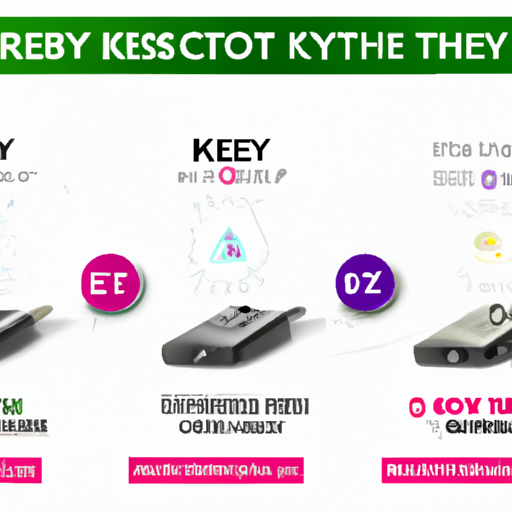
LED transmitters are a crucial component in the world of technology, enabling the transmission of data through light signals. These devices are used in a wide range of applications, from telecommunications to automotive systems. In this article, we will explore the key product categories of LED transmitters and their importance in various industries.1. Visible Light Communication (VLC) TransmittersOne of the most common applications of LED transmitters is in visible light communication (VLC) systems. These systems use light signals to transmit data, providing a secure and efficient way to transfer information. VLC transmitters are used in indoor positioning systems, Li-Fi technology, and other applications where traditional wireless communication methods may not be suitable.2. Infrared (IR) TransmittersInfrared LED transmitters are another important product category in the world of LED technology. These devices emit infrared light signals, which are commonly used in remote controls, security systems, and proximity sensors. IR transmitters are also used in optical communication systems, where they provide a reliable and cost-effective way to transmit data over short distances.3. High-Power LED TransmittersHigh-power LED transmitters are designed to emit intense light signals over long distances. These devices are used in applications such as outdoor lighting, automotive headlights, and industrial signaling systems. High-power LED transmitters are known for their durability and energy efficiency, making them a popular choice for demanding applications.4. Multi-Color LED TransmittersMulti-color LED transmitters are capable of emitting light signals in different colors, allowing for more versatile communication options. These devices are used in applications such as traffic lights, signage, and entertainment systems. Multi-color LED transmitters are often used in combination with color sensors to create dynamic and interactive lighting effects.5. UV LED TransmittersUV LED transmitters emit ultraviolet light signals, which are used in a variety of applications, including sterilization, water purification, and medical treatments. UV LED transmitters are known for their germicidal properties, making them an essential component in healthcare and sanitation systems. These devices are also used in industrial processes, such as curing adhesives and coatings.6. RGB LED TransmittersRGB LED transmitters are capable of emitting light signals in red, green, and blue colors, allowing for a wide range of color options. These devices are used in applications such as stage lighting, architectural lighting, and display systems. RGB LED transmitters are popular in the entertainment industry, where they are used to create vibrant and dynamic lighting effects.7. Laser LED TransmittersLaser LED transmitters are high-power devices that emit focused laser beams for long-distance communication. These devices are used in applications such as fiber optic communication, laser pointers, and laser scanning systems. Laser LED transmitters are known for their precision and reliability, making them a popular choice for critical communication systems.In conclusion, LED transmitters are a versatile and essential component in modern technology. From visible light communication systems to UV sterilization devices, these devices play a crucial role in a wide range of applications. By understanding the key product categories of LED transmitters, we can appreciate their importance in various industries and the innovative ways in which they are used to transmit data through light signals.
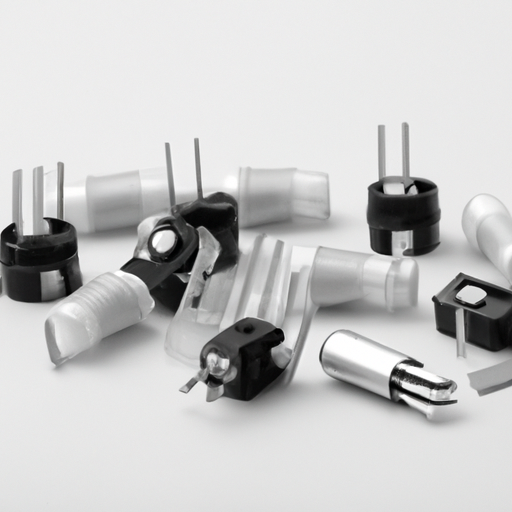
The global LED transmitter market is expected to witness significant growth in the coming years, driven by the increasing adoption of LED technology in various applications such as automotive, consumer electronics, and healthcare. LED transmitters are devices that use light-emitting diodes (LEDs) to transmit data wirelessly, offering a more efficient and reliable alternative to traditional radio frequency (RF) communication.One of the key factors driving the growth of the LED transmitter market is the rising demand for high-speed and secure data transmission in various industries. LED transmitters offer higher data rates and lower latency compared to RF communication, making them ideal for applications that require real-time data transmission, such as industrial automation and smart grid systems. Additionally, LED transmitters are more secure than RF communication, as they are less susceptible to interference and eavesdropping.The automotive industry is expected to be a major driver of growth for the LED transmitter market, as automakers increasingly adopt LED technology for vehicle-to-vehicle (V2V) and vehicle-to-infrastructure (V2I) communication. LED transmitters offer higher data rates and lower latency compared to RF communication, making them ideal for applications such as collision avoidance systems and traffic management. Furthermore, LED transmitters are more energy-efficient than RF communication, helping automakers meet stringent fuel efficiency standards.The consumer electronics industry is another key market for LED transmitters, as manufacturers look to integrate wireless communication capabilities into a wide range of devices, including smartphones, tablets, and smartwatches. LED transmitters offer a cost-effective and energy-efficient solution for short-range data transmission, enabling seamless connectivity between devices without the need for complex RF antennas. Additionally, LED transmitters can be easily integrated into existing LED displays, providing a compact and versatile solution for wireless communication.In the healthcare industry, LED transmitters are being used for a variety of applications, including patient monitoring, medical imaging, and telemedicine. LED transmitters offer a safe and reliable solution for transmitting sensitive medical data wirelessly, enabling healthcare providers to monitor patients remotely and make timely decisions based on real-time data. Additionally, LED transmitters can be integrated into wearable devices and medical sensors, providing a seamless and unobtrusive solution for continuous health monitoring.Despite the promising growth prospects, the LED transmitter market faces several challenges that could hinder its expansion. One of the key challenges is the limited range of LED transmitters, which typically have a shorter range compared to RF communication. This could restrict the adoption of LED transmitters in applications that require long-range communication, such as outdoor lighting and smart city infrastructure.Another challenge facing the LED transmitter market is the lack of standardization in LED communication protocols, which could hinder interoperability between different devices and systems. To address this issue, industry stakeholders are working towards developing common standards for LED communication, such as the IEEE 802.15.7 standard for visible light communication (VLC). Standardization efforts are expected to accelerate the adoption of LED transmitters in various applications and drive market growth in the coming years.In conclusion, the global LED transmitter market is poised for significant growth in the coming years, driven by the increasing adoption of LED technology in various industries. LED transmitters offer a more efficient and reliable alternative to traditional RF communication, enabling high-speed and secure data transmission in a wide range of applications. While the market faces challenges such as limited range and lack of standardization, ongoing efforts to address these issues are expected to drive market growth and unlock new opportunities for industry players.
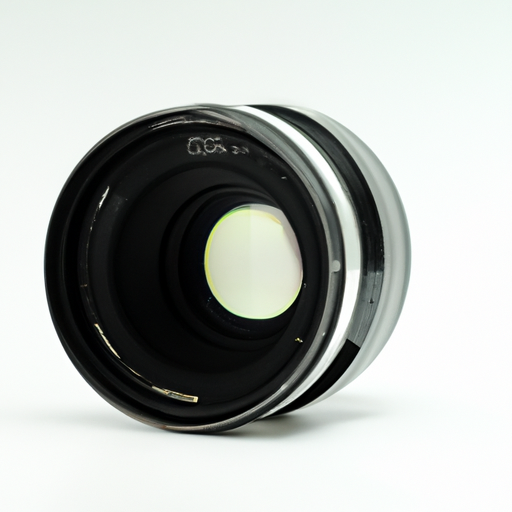
A camera lens is a crucial component of any camera system, whether it be a DSLR, mirrorless, or even a smartphone camera. The lens is responsible for capturing light and focusing it onto the camera's sensor, creating the image that we see. A camera lens is made up of several components and modules that work together to produce sharp, clear images. In this article, we will explore the various components and modules that make up a camera lens and how they contribute to the overall performance of the lens.1. Lens Elements:The most basic component of a camera lens is the lens element. A lens element is a single piece of glass or plastic that is curved on one or both sides. Multiple lens elements are stacked together to form a lens. Each lens element has a specific purpose, such as focusing light, reducing distortion, or correcting chromatic aberration. The number and arrangement of lens elements in a lens can vary depending on the type of lens and its intended use.2. Lens Groups:Lens elements are often grouped together in specific configurations called lens groups. Lens groups are designed to work together to achieve a specific optical effect, such as zooming, focusing, or correcting aberrations. There are several types of lens groups, including the front group, rear group, and middle group. Each lens group plays a crucial role in the overall performance of the lens.3. Aperture:The aperture is another essential component of a camera lens. The aperture is a circular opening in the lens that controls the amount of light that passes through to the camera's sensor. The size of the aperture can be adjusted to control the depth of field and the amount of light that reaches the sensor. The aperture is typically controlled by a diaphragm mechanism that opens and closes to adjust the size of the opening.4. Focusing Mechanism:The focusing mechanism is responsible for adjusting the position of the lens elements to bring the subject into sharp focus. There are several types of focusing mechanisms, including manual focus, autofocus, and internal focusing. Manual focus lenses require the photographer to adjust the focus ring manually, while autofocus lenses use a motorized mechanism to automatically focus on the subject. Internal focusing lenses adjust the position of the lens elements internally, without changing the physical length of the lens.5. Image Stabilization:Image stabilization is a feature found in many modern camera lenses that helps reduce camera shake and blur in images. Image stabilization works by compensating for small movements of the camera, allowing for sharper images even in low light conditions or when using slow shutter speeds. There are several types of image stabilization, including optical stabilization, sensor-shift stabilization, and electronic stabilization. Each type of stabilization has its advantages and disadvantages, depending on the type of photography being done.6. Lens Coatings:Lens coatings are applied to the surface of lens elements to reduce reflections, flare, and ghosting. Lens coatings help improve the contrast and color accuracy of images by minimizing unwanted light reflections. There are several types of lens coatings, including anti-reflective coatings, multi-coatings, and nano-coatings. Each type of coating has its unique properties and benefits, depending on the specific requirements of the lens.7. Lens Mount:The lens mount is the interface that connects the lens to the camera body. The lens mount ensures a secure and stable connection between the lens and the camera, allowing for accurate communication between the two components. There are several types of lens mounts, including bayonet mounts, screw mounts, and electronic mounts. Each type of lens mount has its advantages and limitations, depending on the camera system and lens compatibility.In conclusion, a camera lens is a complex optical system made up of several components and modules that work together to produce high-quality images. Each component plays a crucial role in the overall performance of the lens, from focusing light to reducing aberrations and improving image quality. Understanding the various components and modules of a camera lens can help photographers choose the right lens for their specific needs and achieve the best possible results in their photography.
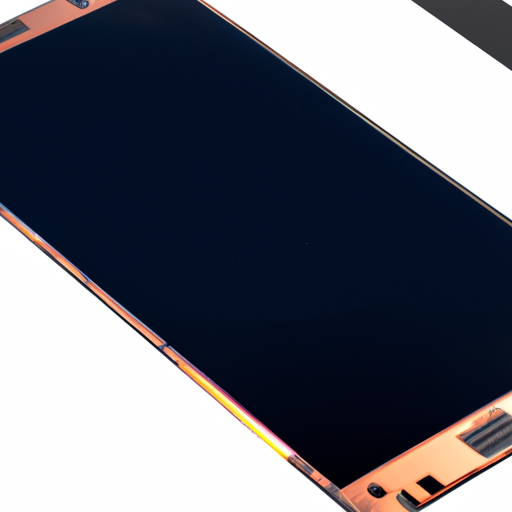
In today's fast-paced world of technology, display border device components are constantly evolving to meet the demands of consumers. With the rise of smart devices and the increasing need for high-quality displays, manufacturers are constantly looking for new ways to improve the performance and functionality of these components. In this article, we will explore the purchasing models for the latest display border device components, including the different types of components available, the key features to consider when making a purchase, and the latest trends in the market.Types of Display Border Device ComponentsWhen it comes to display border device components, there are several key components that are essential for creating a high-quality display. These components include:1. LCD/LED Panels: The display panel is the most important component of any display border device. LCD panels are commonly used in displays, while LED panels are becoming increasingly popular due to their energy efficiency and brightness. When purchasing a display border device, it is important to consider the type of panel used and its resolution, refresh rate, and color accuracy.2. Touchscreen Technology: Many display border devices now come with touchscreen technology, allowing users to interact with the display using their fingers or a stylus. When purchasing a display border device with touchscreen technology, it is important to consider the responsiveness and accuracy of the touchscreen, as well as any additional features such as multi-touch support.3. Display Driver ICs: Display driver ICs are essential components that control the display panel and ensure that it functions correctly. When purchasing a display border device, it is important to consider the quality and compatibility of the display driver ICs used, as well as any additional features such as support for different display resolutions and refresh rates.4. Backlighting: Backlighting is another important component of display border devices, providing the necessary illumination for the display panel. LED backlighting is commonly used in displays due to its energy efficiency and brightness. When purchasing a display border device, it is important to consider the type of backlighting used and its brightness and color accuracy.Key Features to Consider When Purchasing Display Border Device ComponentsWhen purchasing display border device components, there are several key features to consider to ensure that you are getting the best performance and functionality for your needs. Some of the key features to consider include:1. Resolution: The resolution of the display panel is an important factor to consider when purchasing display border device components. Higher resolutions provide sharper images and text, making them ideal for tasks such as graphic design and video editing.2. Refresh Rate: The refresh rate of the display panel determines how many times per second the image on the screen is refreshed. A higher refresh rate results in smoother motion and reduced motion blur, making it ideal for gaming and watching videos.3. Color Accuracy: Color accuracy is essential for tasks such as graphic design and photo editing, as it ensures that colors are displayed accurately on the screen. When purchasing display border device components, it is important to consider the color accuracy of the display panel and any additional features such as support for wide color gamuts.4. Connectivity: Connectivity options are important when purchasing display border device components, as they determine how the device can be connected to other devices such as computers, smartphones, and gaming consoles. When purchasing display border device components, it is important to consider the types of ports available, such as HDMI, DisplayPort, and USB-C.Latest Trends in the MarketIn recent years, there have been several key trends in the market for display border device components, including:1. Curved Displays: Curved displays have become increasingly popular in recent years, offering a more immersive viewing experience and reducing glare and reflections. When purchasing display border device components, it is important to consider whether a curved display is suitable for your needs.2. High-Dynamic Range (HDR) Technology: HDR technology is becoming increasingly popular in display border devices, offering improved contrast and color accuracy for a more realistic viewing experience. When purchasing display border device components, it is important to consider whether the device supports HDR technology.3. Gaming Monitors: Gaming monitors are becoming increasingly popular in the market, offering high refresh rates, low response times, and adaptive sync technologies for a smoother gaming experience. When purchasing display border device components for gaming, it is important to consider these key features.4. Ultra-Wide Displays: Ultra-wide displays are becoming increasingly popular for tasks such as video editing and multitasking, offering a wider field of view and more screen real estate. When purchasing display border device components, it is important to consider whether an ultra-wide display is suitable for your needs.Purchasing Models for Display Border Device ComponentsWhen it comes to purchasing display border device components, there are several different models available to suit different needs and budgets. Some of the most common purchasing models include:1. Retail: Retail stores are a popular option for purchasing display border device components, offering a wide range of products from different manufacturers. When purchasing display border device components from a retail store, it is important to consider factors such as price, warranty, and customer service.2. Online: Online retailers such as Amazon and Newegg are popular options for purchasing display border device components, offering a wide range of products at competitive prices. When purchasing display border device components online, it is important to consider factors such as shipping costs, return policies, and customer reviews.3. Direct from Manufacturer: Some manufacturers sell display border device components directly to consumers through their websites or authorized resellers. When purchasing display border device components directly from the manufacturer, it is important to consider factors such as warranty, customer support, and compatibility with other devices.4. Custom-Built: For users with specific requirements or preferences, custom-built display border device components are a popular option. Custom-built displays allow users to choose the specific components they need, such as the display panel, touchscreen technology, and backlighting, to create a display that meets their exact requirements.ConclusionIn conclusion, display border device components are constantly evolving to meet the demands of consumers for high-quality displays. When purchasing display border device components, it is important to consider factors such as resolution, refresh rate, color accuracy, and connectivity options to ensure that you are getting the best performance and functionality for your needs. By staying informed about the latest trends in the market and considering the different purchasing models available, you can make an informed decision when purchasing display border device components for your next project or device.
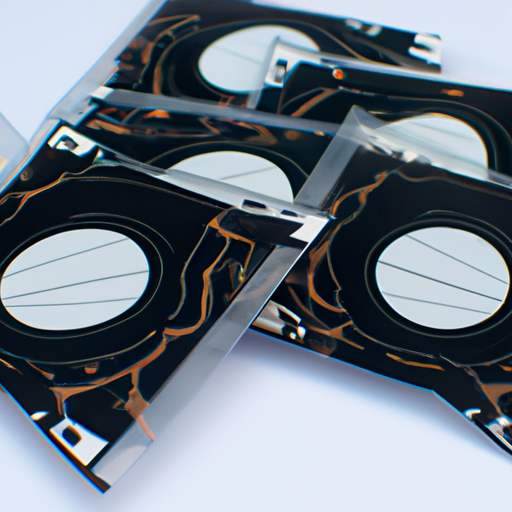
The display module industry is a crucial component of the global technology sector, providing the screens and interfaces that allow users to interact with various devices such as smartphones, tablets, laptops, televisions, and more. With the rapid advancements in technology and the increasing demand for high-quality displays, the display module industry has seen significant growth and innovation in recent years.One of the key drivers of the display module industry is the increasing adoption of smartphones and other mobile devices. As more and more people rely on their smartphones for communication, entertainment, and productivity, the demand for high-quality displays has surged. Manufacturers have responded by developing innovative display technologies such as OLED (organic light-emitting diode) and AMOLED (active-matrix organic light-emitting diode) screens, which offer superior color reproduction, contrast ratios, and energy efficiency compared to traditional LCD (liquid crystal display) screens.In addition to smartphones, the display module industry is also benefiting from the growing popularity of other devices such as smartwatches, fitness trackers, and virtual reality headsets. These devices require small, lightweight displays with high resolution and fast refresh rates, driving further innovation in the industry.Another key trend in the display module industry is the increasing demand for flexible and foldable displays. Flexible displays allow for new form factors and designs in smartphones and other devices, while foldable displays enable devices to transform from a smartphone-sized screen to a tablet-sized screen and back again. Companies such as Samsung and Huawei have already released smartphones with foldable displays, and other manufacturers are expected to follow suit in the coming years.The display module industry is also seeing advancements in display technologies such as microLED and miniLED. These technologies offer improved brightness, contrast, and energy efficiency compared to traditional LED displays, making them ideal for applications such as high-end televisions and digital signage.Despite the rapid advancements and growth in the display module industry, there are still challenges that manufacturers must overcome. One of the biggest challenges is the increasing competition from Chinese manufacturers, who are able to produce displays at lower costs due to government subsidies and economies of scale. This has put pressure on established display manufacturers in countries such as South Korea, Japan, and Taiwan, leading to consolidation and restructuring in the industry.Another challenge facing the display module industry is the environmental impact of display manufacturing. The production of displays requires the use of rare earth metals and other materials that can be harmful to the environment if not properly managed. Manufacturers are increasingly focused on sustainability and are investing in research and development to develop more eco-friendly display technologies.In conclusion, the display module industry is a dynamic and rapidly evolving sector that plays a crucial role in the global technology ecosystem. With the increasing demand for high-quality displays in smartphones, tablets, televisions, and other devices, manufacturers are investing in research and development to develop innovative display technologies that offer superior performance and energy efficiency. While there are challenges facing the industry, such as increasing competition and environmental concerns, the future looks bright for the display module industry as it continues to drive innovation and shape the way we interact with technology.
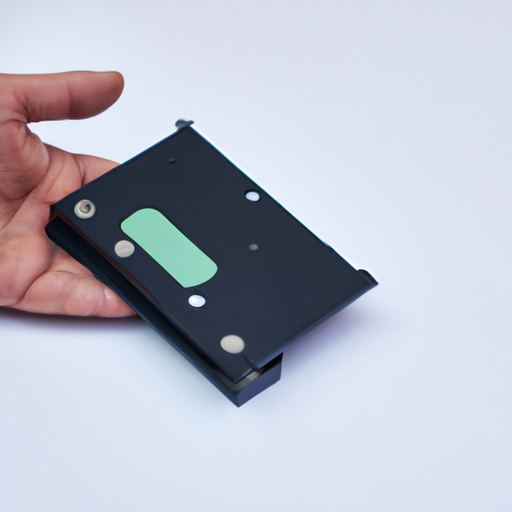
Choosing the right spot display module for your project can be a daunting task, especially with the wide range of options available in the market. However, by considering a few key factors, you can make an informed decision that meets your specific needs and requirements. In this article, we will discuss the important factors to consider when choosing a spot display module and provide some tips to help you make the right choice.1. Display Type:
The first factor to consider when choosing a spot display module is the type of display technology. There are several types of display technologies available, including LCD, OLED, and e-ink. Each type has its own advantages and disadvantages, so it is important to choose the one that best suits your project requirements. For example, if you need a high-resolution display with vibrant colors, an OLED display may be the best choice. On the other hand, if you need a display that is easy to read in direct sunlight, an e-ink display may be more suitable.2. Display Size:
Another important factor to consider when choosing a spot display module is the size of the display. The size of the display will depend on the application and the amount of information that needs to be displayed. For example, if you are designing a wearable device, you may need a small display that can fit comfortably on the user's wrist. On the other hand, if you are designing a digital signage display, you may need a larger display to attract the attention of passersby.3. Resolution:
Resolution is another important factor to consider when choosing a spot display module. The resolution of the display will determine the clarity and sharpness of the images and text displayed on the screen. Higher resolution displays will provide better image quality, but they may also be more expensive. It is important to consider the resolution requirements of your project and choose a display module that meets those requirements.4. Interface:
The interface of the spot display module is another important factor to consider. The interface will determine how the display module communicates with the rest of the system. Common interfaces include HDMI, SPI, I2C, and UART. It is important to choose a display module with an interface that is compatible with your existing hardware and software.5. Power Consumption:
Power consumption is another important factor to consider when choosing a spot display module. The power consumption of the display module will determine how long the device can operate on a single charge. It is important to choose a display module with low power consumption to maximize battery life and reduce the need for frequent recharging.6. Durability:
Durability is another important factor to consider when choosing a spot display module, especially if the device will be used in harsh environments or outdoor settings. It is important to choose a display module that is rugged and can withstand dust, water, and extreme temperatures.7. Cost:
Finally, cost is an important factor to consider when choosing a spot display module. Display modules can vary widely in price, depending on the type of display technology, size, resolution, and features. It is important to consider your budget and choose a display module that offers the best value for your money.In conclusion, choosing the right spot display module for your project requires careful consideration of several key factors, including display type, size, resolution, interface, power consumption, durability, and cost. By taking these factors into account and doing thorough research, you can make an informed decision that meets your specific needs and requirements.
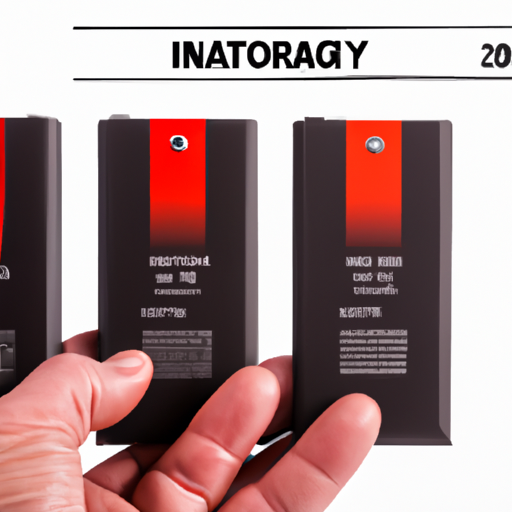
The non-charging battery scenario is a concept that has been gaining traction in recent years as a potential solution to the environmental and economic challenges posed by traditional rechargeable batteries. This scenario envisions a future where batteries are designed to be used without the need for recharging, thereby eliminating the need for electricity to power them.This concept has the potential to revolutionize a wide range of industries, from consumer electronics to transportation to renewable energy storage. In this article, we will explore the implications of the non-charging battery scenario for these industries and discuss the potential benefits and challenges that it presents.Consumer ElectronicsOne of the most obvious applications of non-charging batteries is in consumer electronics. Imagine a smartphone that never needs to be plugged in or a laptop that can run indefinitely without needing to be recharged. This would not only simplify the user experience but also reduce the environmental impact of these devices by eliminating the need for electricity to power them.In addition, non-charging batteries could enable new types of devices that are currently not feasible due to the limitations of traditional rechargeable batteries. For example, wearable devices that monitor health metrics or track physical activity could be powered by non-charging batteries, allowing them to operate continuously without the need for frequent recharging.TransportationThe transportation industry is another sector that could benefit significantly from the non-charging battery scenario. Electric vehicles (EVs) are becoming increasingly popular as a more sustainable alternative to traditional gasoline-powered vehicles, but one of the main challenges facing EV adoption is the limited range of current battery technology.Non-charging batteries could potentially eliminate this range anxiety by allowing EVs to operate continuously without the need for recharging. This would not only make EVs more convenient for consumers but also reduce the need for infrastructure to support charging stations, further reducing the environmental impact of transportation.In addition, non-charging batteries could enable new modes of transportation that are currently not feasible with traditional rechargeable batteries. For example, electric aircraft or drones could operate continuously without the need for frequent recharging, opening up new possibilities for sustainable air travel and logistics.Renewable Energy StorageThe non-charging battery scenario also has the potential to revolutionize the renewable energy industry by enabling more efficient energy storage solutions. One of the main challenges facing renewable energy sources such as solar and wind power is their intermittent nature, which can lead to fluctuations in energy supply and demand.Non-charging batteries could help to address this challenge by providing a more reliable and continuous source of energy storage. For example, solar panels could store excess energy during the day in non-charging batteries, which could then be used to power homes and businesses at night when the sun is not shining.Furthermore, non-charging batteries could enable new applications for renewable energy sources, such as off-grid power systems or microgrids that are not connected to the main electricity grid. This could help to increase energy access in remote or underserved areas and reduce reliance on fossil fuels for electricity generation.Challenges and ConsiderationsWhile the non-charging battery scenario holds great promise for a wide range of industries, there are also several challenges and considerations that need to be addressed in order to realize its full potential. One of the main challenges is the development of new battery technologies that are capable of operating without the need for recharging.Current battery technology is based on electrochemical reactions that require the input of electricity to recharge the battery. Developing new types of batteries that can operate without recharging will require significant research and development efforts, as well as investment in manufacturing and scale-up.In addition, there are also practical considerations to take into account, such as the size, weight, and cost of non-charging batteries. These factors will need to be optimized in order to make non-charging batteries viable for commercial applications in a wide range of industries.Furthermore, there are also environmental considerations to take into account, such as the sourcing of raw materials for non-charging batteries and the end-of-life disposal of these batteries. Ensuring that non-charging batteries are produced and disposed of in a sustainable and environmentally friendly manner will be crucial to minimizing their impact on the planet.ConclusionThe non-charging battery scenario has the potential to revolutionize a wide range of industries, from consumer electronics to transportation to renewable energy storage. By eliminating the need for recharging, non-charging batteries could simplify the user experience, reduce the environmental impact of battery-powered devices, and enable new applications and modes of transportation.However, realizing the full potential of the non-charging battery scenario will require significant research and development efforts, as well as investment in manufacturing and scale-up. Addressing the technical, practical, and environmental challenges associated with non-charging batteries will be crucial to ensuring their viability for commercial applications in the future.Overall, the non-charging battery scenario represents an exciting opportunity to transform the way we power our devices, vehicles, and homes. By harnessing the potential of non-charging batteries, we can move towards a more sustainable and efficient future for energy storage and consumption.

Batteries are an essential component of modern life, powering everything from our smartphones and laptops to our cars and even our homes. With the increasing demand for portable electronic devices and electric vehicles, the battery market has seen significant growth in recent years. There are several key product categories of batteries, each with its own unique characteristics and applications.1. Lithium-ion BatteriesLithium-ion batteries are the most common type of rechargeable battery used in consumer electronics, electric vehicles, and energy storage systems. They are known for their high energy density, long cycle life, and relatively low self-discharge rate. Lithium-ion batteries are lightweight and compact, making them ideal for portable devices like smartphones and laptops.One of the main advantages of lithium-ion batteries is their high energy density, which allows them to store a large amount of energy in a small space. This makes them ideal for use in electric vehicles, where space and weight are critical factors. Lithium-ion batteries are also known for their long cycle life, meaning they can be recharged and discharged many times without losing their capacity.2. Lead-acid BatteriesLead-acid batteries are one of the oldest and most widely used types of rechargeable batteries. They are commonly used in automotive applications, as well as in backup power systems for telecommunications, UPS systems, and renewable energy storage. Lead-acid batteries are known for their low cost, reliability, and ability to deliver high surge currents.Lead-acid batteries are relatively heavy and bulky compared to other types of batteries, but they are still widely used in applications where cost is a primary concern. They are also known for their ability to deliver high surge currents, making them ideal for starting engines in vehicles and providing backup power during outages.3. Nickel-metal Hydride (NiMH) BatteriesNickel-metal hydride batteries are another type of rechargeable battery commonly used in consumer electronics, such as digital cameras, cordless phones, and power tools. They are known for their high energy density, long cycle life, and relatively low self-discharge rate. NiMH batteries are also more environmentally friendly than other types of batteries, as they do not contain toxic heavy metals like cadmium.One of the main advantages of NiMH batteries is their high energy density, which allows them to store a large amount of energy in a small space. This makes them ideal for use in portable devices like digital cameras and power tools. NiMH batteries also have a long cycle life, meaning they can be recharged and discharged many times without losing their capacity.4. Nickel-cadmium (NiCd) BatteriesNickel-cadmium batteries are another type of rechargeable battery that was once widely used in consumer electronics, but has been largely replaced by newer technologies like lithium-ion and NiMH batteries. NiCd batteries are known for their high energy density, long cycle life, and ability to deliver high surge currents. They are also relatively inexpensive compared to other types of batteries.One of the main advantages of NiCd batteries is their ability to deliver high surge currents, making them ideal for applications where a large amount of power is needed in a short amount of time. NiCd batteries also have a long cycle life, meaning they can be recharged and discharged many times without losing their capacity.5. Alkaline BatteriesAlkaline batteries are non-rechargeable batteries commonly used in consumer electronics, such as remote controls, flashlights, and toys. They are known for their long shelf life, low cost, and ability to deliver high surge currents. Alkaline batteries are also relatively safe and environmentally friendly, as they do not contain toxic heavy metals like cadmium.One of the main advantages of alkaline batteries is their long shelf life, meaning they can be stored for long periods of time without losing their capacity. This makes them ideal for use in devices that are not used frequently, such as remote controls and flashlights. Alkaline batteries are also relatively inexpensive compared to other types of batteries, making them a popular choice for everyday consumer electronics.In conclusion, batteries are an essential component of modern life, powering a wide range of devices and applications. There are several key product categories of batteries, each with its own unique characteristics and applications. From lithium-ion batteries used in electric vehicles to alkaline batteries used in remote controls, the battery market continues to evolve and innovate to meet the growing demand for portable power sources.

Cigarette filters, also known as Cigaretteer components, are an essential part of a cigarette that plays a crucial role in reducing the amount of harmful substances that smokers inhale. These filters are typically made of cellulose acetate, a type of plastic that is designed to trap some of the toxic chemicals present in cigarette smoke. In this article, we will explore the various components of a cigarette filter, how they work, and the impact they have on smoking-related health risks.The main purpose of a cigarette filter is to reduce the amount of tar, nicotine, and other harmful chemicals that smokers inhale when they smoke a cigarette. The filter is located at the end of the cigarette, between the tobacco and the mouthpiece, and is designed to trap some of these substances before they reach the smoker's lungs. This can help to reduce the risk of developing smoking-related diseases such as lung cancer, heart disease, and respiratory problems.Cigarette filters are typically made of cellulose acetate, a type of plastic that is derived from wood pulp. This material is chosen for its ability to effectively trap harmful substances while still allowing air to pass through, allowing the smoker to inhale the smoke. The filter is usually white in color and has a cylindrical shape, with tiny perforations that allow air to mix with the smoke as it is drawn through the filter.In addition to cellulose acetate, cigarette filters may also contain other materials such as activated charcoal or cotton fibers. Activated charcoal is a highly porous material that is known for its ability to absorb toxins and odors, making it an effective component in cigarette filters. Cotton fibers can also help to trap harmful substances, although they are less commonly used in modern cigarette filters.When a smoker inhales from a cigarette, the smoke passes through the filter, where some of the harmful substances are trapped. The filter acts as a barrier, preventing these toxins from reaching the smoker's lungs and reducing their overall exposure to harmful chemicals. However, it is important to note that cigarette filters are not completely effective at removing all harmful substances, and smokers are still at risk of developing smoking-related diseases even when using filtered cigarettes.Despite their intended purpose, cigarette filters have been the subject of controversy and debate in recent years. Some critics argue that filters give smokers a false sense of security, leading them to believe that filtered cigarettes are less harmful than unfiltered ones. This misconception can result in smokers inhaling more deeply or smoking more cigarettes, ultimately increasing their exposure to harmful chemicals.Furthermore, some studies have suggested that cigarette filters may actually increase the risk of certain health problems. For example, research has shown that smokers of filtered cigarettes are more likely to develop lung adenocarcinoma, a type of lung cancer that is associated with smoking. This is believed to be due to the fact that filters can trap certain chemicals, such as nitrosamines, which are known carcinogens.In conclusion, cigarette filters are an important component of a cigarette that is designed to reduce the amount of harmful substances that smokers inhale. While filters can help to lower the risk of developing smoking-related diseases, they are not foolproof and do not eliminate all health risks associated with smoking. It is important for smokers to be aware of the limitations of cigarette filters and to consider quitting smoking altogether to protect their health.

The latest Battery contact 111 is a cutting-edge device that is revolutionizing the way we power our electronic devices. With its sleek design and advanced technology, this battery contact is a must-have for anyone looking to stay connected on the go. But how much does this innovative device cost? In this article, we will explore the purchase price of the latest Battery contact 111 and why it is worth every penny.The purchase price of the latest Battery contact 111 varies depending on where you buy it and any additional features or accessories you choose to include. On average, the cost of the Battery contact 111 ranges from $50 to $100. This may seem like a steep price for a battery contact, but when you consider the benefits and features that come with this device, it is well worth the investment.One of the main reasons why the Battery contact 111 is priced higher than other battery contacts on the market is because of its advanced technology. This device is equipped with a high-capacity battery that can provide hours of power to your electronic devices. Whether you are using your smartphone, tablet, or laptop, the Battery contact 111 will keep you connected and powered up throughout the day.In addition to its impressive battery life, the Battery contact 111 also features fast charging capabilities. This means that you can quickly recharge your device and get back to using it in no time. This is especially useful for those who are constantly on the go and need to stay connected at all times.Another factor that contributes to the higher price of the Battery contact 111 is its durability and reliability. This device is built to last, with a sturdy construction that can withstand daily wear and tear. You can trust that the Battery contact 111 will continue to perform at its best, even after years of use.When you compare the cost of the Battery contact 111 to the price of constantly replacing cheap, low-quality battery contacts, the value becomes clear. Investing in a high-quality device like the Battery contact 111 will save you money in the long run and ensure that you always have a reliable power source for your electronic devices.In conclusion, the purchase price of the latest Battery contact 111 may be higher than other battery contacts on the market, but it is well worth the investment. With its advanced technology, fast charging capabilities, durability, and reliability, this device is a game-changer for anyone looking to stay connected on the go. So if you are in the market for a new battery contact, consider investing in the Battery contact 111 – you won't be disappointed.
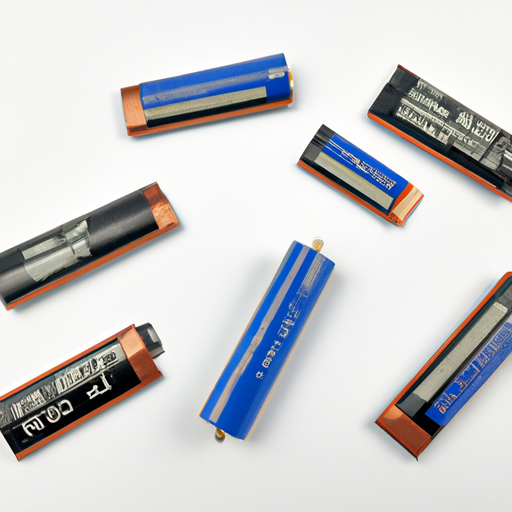
Battery clips are essential components used in various electronic devices to connect batteries to the circuit. They are typically made of metal and come in various shapes and sizes to accommodate different types of batteries. The production process for battery clips involves several steps to ensure they meet the required specifications and quality standards.The common production processes for battery clips include material selection, stamping, forming, plating, and quality control. Each step plays a crucial role in the overall manufacturing process and contributes to the final product's performance and durability.Material Selection:The first step in the production process for battery clips is material selection. The material used for battery clips is typically a high-conductivity metal such as copper, brass, or phosphor bronze. These metals are chosen for their excellent electrical conductivity, corrosion resistance, and durability.The material selection process involves sourcing high-quality metal sheets or coils that meet the required specifications for the battery clips. The metal is then inspected for any defects or impurities that could affect the final product's performance.Stamping:Once the material is selected, the next step in the production process is stamping. Stamping is a manufacturing process that involves cutting, bending, and shaping the metal sheets into the desired shape of the battery clip. This process is typically done using a stamping press, which applies high pressure to the metal sheets to form the clips.During the stamping process, precision dies are used to cut the metal sheets into the desired shape and size of the battery clip. The metal is then bent and formed to create the necessary features, such as the contact points and mounting holes.Forming:After the stamping process is complete, the next step in the production process is forming. Forming involves shaping the stamped metal into the final shape of the battery clip. This process may involve additional bending, folding, or shaping to achieve the desired dimensions and features of the clip.Forming is typically done using specialized forming tools and equipment that allow for precise shaping and bending of the metal. The formed clips are then inspected for any defects or imperfections that could affect their performance.Plating:Once the battery clips are formed, the next step in the production process is plating. Plating is a surface treatment process that involves applying a thin layer of metal or other material to the surface of the clips to improve their corrosion resistance, conductivity, and appearance.Common plating materials used for battery clips include nickel, tin, and silver. These materials are chosen for their excellent conductivity and corrosion resistance properties. The plating process involves cleaning the clips, applying a layer of plating material using electroplating or other methods, and then curing the plating to ensure adhesion and durability.Quality Control:The final step in the production process for battery clips is quality control. Quality control involves inspecting the clips for any defects, imperfections, or deviations from the required specifications. This may include dimensional checks, visual inspections, and electrical testing to ensure the clips meet the required standards.Any clips that do not meet the quality standards are rejected and either reworked or scrapped. Quality control is essential to ensure the final product's performance, reliability, and durability.In conclusion, the production process for battery clips involves several steps, including material selection, stamping, forming, plating, and quality control. Each step plays a crucial role in ensuring the clips meet the required specifications and quality standards. By following these production processes, manufacturers can produce high-quality battery clips that are essential components in various electronic devices.

Battery holders are an essential component in a wide range of electronic devices, providing a secure and reliable way to hold batteries in place while ensuring proper electrical connections. These holders come in various shapes and sizes to accommodate different types of batteries, from small coin cells to larger cylindrical cells. The main application direction of battery holders can be seen in various industries and applications, including consumer electronics, medical devices, industrial equipment, and more.Consumer ElectronicsOne of the most common applications of battery holders is in consumer electronics, where they are used in devices such as remote controls, toys, flashlights, and portable electronic devices. Battery holders provide a convenient and easy way to replace batteries when they run out of power, without the need for soldering or other complex assembly processes. In addition, battery holders help to protect the batteries from damage and ensure a secure connection for reliable performance.Medical DevicesBattery holders are also widely used in medical devices, where reliability and safety are critical. These holders are used in devices such as blood glucose meters, portable medical monitors, and electronic thermometers. Battery holders in medical devices must meet strict quality and safety standards to ensure proper functioning and prevent any risk of malfunction. In addition, battery holders in medical devices are often designed to be easily accessible for battery replacement, without the need for specialized tools or training.Industrial EquipmentBattery holders play a crucial role in industrial equipment, where they are used in devices such as handheld scanners, portable meters, and industrial control systems. These holders provide a secure and reliable way to power these devices, even in harsh industrial environments. Battery holders in industrial equipment are often designed to withstand high temperatures, vibrations, and other challenging conditions, ensuring reliable performance in demanding applications.Automotive ApplicationsBattery holders are also used in automotive applications, where they are used in devices such as key fobs, tire pressure monitors, and other electronic accessories. These holders provide a secure and reliable way to power these devices, even in the harsh conditions of a vehicle's interior. Battery holders in automotive applications must meet strict safety and reliability standards to ensure proper functioning and prevent any risk of malfunction.Military and Aerospace ApplicationsBattery holders are also used in military and aerospace applications, where reliability and durability are critical. These holders are used in devices such as communication systems, navigation equipment, and other electronic devices used in military and aerospace operations. Battery holders in these applications must meet strict quality and safety standards to ensure proper functioning in extreme conditions, such as high altitudes, temperature variations, and vibrations.Overall, battery holders play a crucial role in a wide range of industries and applications, providing a secure and reliable way to hold batteries in place while ensuring proper electrical connections. These holders are essential components in electronic devices, ensuring reliable performance and easy battery replacement. As technology continues to advance, the demand for high-quality battery holders will continue to grow, driving innovation and development in this essential component of electronic devices.
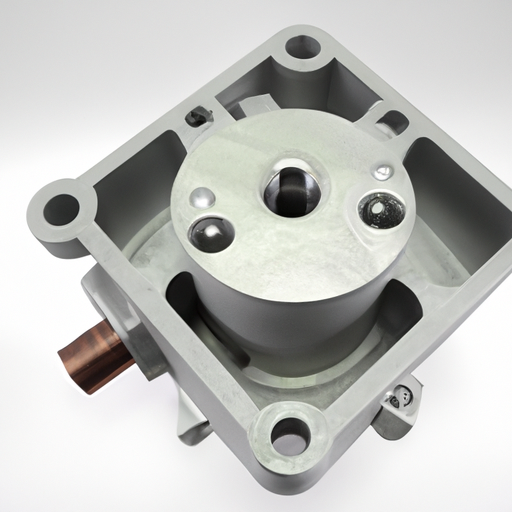
Rheostats are variable resistors that are commonly used in electrical circuits to control the flow of current. They are used in a wide range of applications, from controlling the brightness of lights to regulating the speed of motors. There are several different types of rheostats available on the market, each with its own unique features and benefits. In this article, we will explore some of the most popular rheostat product types and their uses.1. Wire-wound rheostats: Wire-wound rheostats are one of the most common types of rheostats used in electrical circuits. They consist of a coil of resistance wire wound around a ceramic or porcelain core. The resistance of the wire can be adjusted by moving a wiper along the coil, which changes the amount of wire in the circuit. Wire-wound rheostats are known for their high power handling capabilities and precise control over resistance values.2. Potentiometer rheostats: Potentiometer rheostats, also known as potentiometers or pots, are variable resistors that are commonly used in audio equipment and other electronic devices. They consist of a resistive track with a wiper that can be adjusted to change the resistance value. Potentiometers are available in both linear and logarithmic taper versions, allowing for smooth and precise control over resistance values. They are often used in volume controls, tone controls, and other applications where fine adjustments are required.3. Carbon composition rheostats: Carbon composition rheostats are another common type of rheostat that is widely used in electrical circuits. They consist of a resistive element made of carbon particles mixed with a binder material. The resistance of the carbon composition element can be adjusted by moving a wiper along the surface of the element. Carbon composition rheostats are known for their high stability and reliability, making them ideal for use in industrial applications.4. Cermet rheostats: Cermet rheostats are a type of rheostat that uses a ceramic and metal composite material for the resistive element. This material offers high stability and precision, making cermet rheostats ideal for applications where accuracy is critical. Cermet rheostats are often used in precision instruments, medical devices, and other high-precision applications.5. Wirewound precision rheostats: Wirewound precision rheostats are designed for applications that require high accuracy and precision control over resistance values. They are constructed using a precision-wound resistance wire that offers high stability and low temperature coefficient. Wirewound precision rheostats are commonly used in laboratory equipment, test and measurement instruments, and other applications where precise control over resistance values is essential.6. Digital rheostats: Digital rheostats are a modern type of rheostat that uses digital technology to control resistance values. They typically consist of a microcontroller and digital potentiometer that can be programmed to provide precise control over resistance values. Digital rheostats offer several advantages over traditional rheostats, including remote control capabilities, programmable settings, and digital readouts of resistance values. They are commonly used in automation systems, robotics, and other applications where precise control and monitoring of resistance values are required.In conclusion, rheostats are versatile components that are used in a wide range of electrical circuits to control the flow of current. There are several different types of rheostats available, each with its own unique features and benefits. Whether you need high power handling capabilities, precise control over resistance values, or digital control capabilities, there is a rheostat product type that is suitable for your application. By understanding the different types of rheostats available, you can choose the right product for your specific needs and ensure optimal performance in your electrical circuits.
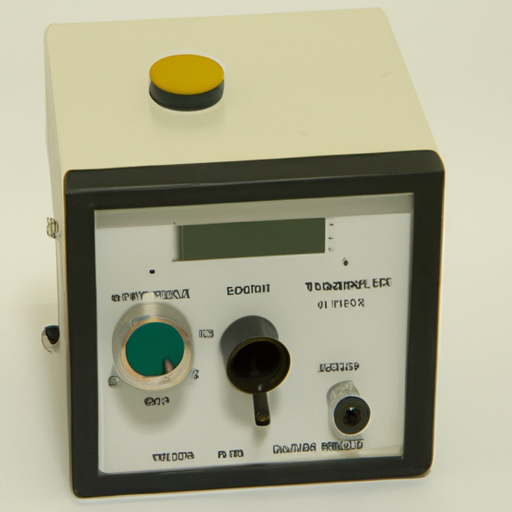
Rotating potential meters, also known as potentiometers, are widely used in various electronic devices to measure and control voltage levels. These devices are essential components in many applications, including audio equipment, industrial machinery, and automotive systems. As technology continues to advance, the demand for high-quality rotating potential meters with advanced features is increasing. In this article, we will discuss the latest specifications of rotating potential meters and how they are meeting the evolving needs of the industry.One of the key specifications of rotating potential meters is their resistance range. The resistance range determines the maximum and minimum values of voltage that can be measured or controlled by the potentiometer. In recent years, manufacturers have been developing rotating potential meters with wider resistance ranges to accommodate a broader range of applications. For example, some models now offer resistance ranges from 0 ohms to 1 megaohm, allowing for precise voltage control in a variety of settings.Another important specification of rotating potential meters is their accuracy. The accuracy of a potentiometer refers to how closely it can measure or control voltage levels compared to the actual value. With advancements in technology, manufacturers have been able to improve the accuracy of rotating potential meters significantly. Many modern potentiometers now offer accuracy levels of up to 0.1%, ensuring precise voltage control in even the most demanding applications.In addition to resistance range and accuracy, the resolution of rotating potential meters is another crucial specification to consider. Resolution refers to the smallest change in voltage that a potentiometer can detect or control. Higher resolution potentiometers allow for more precise voltage adjustments, making them ideal for applications that require fine-tuning of voltage levels. Manufacturers have been developing rotating potential meters with resolutions as high as 0.01 volts, enabling users to make precise adjustments with ease.Durability is also a key consideration when it comes to rotating potential meter specifications. These devices are often subjected to harsh operating conditions, including temperature extremes, vibration, and moisture. To ensure reliable performance in these environments, manufacturers are incorporating rugged designs and high-quality materials into their rotating potential meters. Many modern potentiometers are now built to withstand temperatures ranging from -40°C to 85°C and are sealed to protect against dust and moisture ingress.Another important specification of rotating potential meters is their lifespan. The lifespan of a potentiometer refers to how long it can maintain its performance over time. With the increasing demand for reliable and long-lasting electronic components, manufacturers are focusing on developing rotating potential meters with extended lifespans. Many modern potentiometers now offer a lifespan of up to 1 million cycles, ensuring years of reliable operation in various applications.In conclusion, the latest rotating potential meters on the market are designed to meet the evolving needs of the industry by offering wider resistance ranges, higher accuracy, improved resolution, durability, and extended lifespans. These advanced specifications make modern potentiometers ideal for a wide range of applications, from audio equipment to industrial machinery. As technology continues to advance, we can expect to see even more innovative features and capabilities in rotating potential meters, further enhancing their performance and versatility.

Rotating potential meters, also known as potentiometers, are widely used in various electronic devices to control the voltage or current in a circuit. These devices are essential components in many applications, including audio equipment, lighting controls, and industrial machinery. As a manufacturer or distributor of rotating potential meters, it is crucial to provide comprehensive product training to ensure that customers understand how to properly use and maintain these devices. In this article, we will discuss some key considerations for developing an effective rotating potential meter product training program.1. Understanding the basics of rotating potential metersBefore diving into the specifics of product training, it is essential to have a solid understanding of the basics of rotating potential meters. This includes knowing how these devices work, their different types and configurations, and the various applications they are used in. By having a thorough understanding of rotating potential meters, you will be better equipped to develop a comprehensive training program that covers all the essential information.2. Identifying the target audienceWhen developing a product training program for rotating potential meters, it is crucial to identify the target audience. This could include technicians, engineers, or sales representatives who will be working with these devices on a regular basis. By understanding the specific needs and knowledge levels of your target audience, you can tailor the training program to meet their requirements and ensure that they have the necessary skills to effectively use and troubleshoot rotating potential meters.3. Developing a structured training programA structured training program is essential for effectively conveying information about rotating potential meters. This program should cover all the essential topics, including the basic principles of operation, installation and setup procedures, troubleshooting techniques, and maintenance guidelines. The training program should be organized in a logical sequence, with each topic building upon the previous one to provide a comprehensive understanding of rotating potential meters.4. Utilizing a variety of training methodsTo ensure that the training program is engaging and effective, it is important to utilize a variety of training methods. This could include hands-on demonstrations, interactive presentations, video tutorials, and written materials. By incorporating different training methods, you can cater to different learning styles and ensure that all participants are able to grasp the information effectively.5. Providing hands-on experienceHands-on experience is crucial for developing practical skills in using rotating potential meters. Providing participants with the opportunity to work with actual devices and practice installation, setup, and troubleshooting procedures will help reinforce their understanding of the material. Hands-on experience can also help participants gain confidence in working with rotating potential meters and prepare them for real-world applications.6. Incorporating real-world examplesIncorporating real-world examples into the training program can help participants understand how rotating potential meters are used in different applications. By providing case studies and examples of common problems and solutions, participants can see how the principles they have learned apply in real-world scenarios. This can help make the training program more relevant and engaging, and provide participants with a better understanding of how to apply their knowledge in practice.7. Offering certification or accreditationTo validate the knowledge and skills acquired through the training program, consider offering a certification or accreditation upon completion. This can provide participants with a tangible recognition of their expertise in working with rotating potential meters and can also serve as a valuable credential for career advancement. Certification or accreditation can also help build credibility for your training program and attract more participants in the future.8. Providing ongoing support and resourcesEven after completing the training program, participants may have questions or need additional support in working with rotating potential meters. Providing ongoing support and resources, such as a helpline, online forums, or technical documentation, can help participants address any issues that may arise and continue to build their knowledge and skills. By offering ongoing support, you can ensure that participants feel confident in using rotating potential meters and are able to maximize their effectiveness in various applications.In conclusion, developing an effective rotating potential meter product training program is essential for ensuring that customers have the knowledge and skills to effectively use and maintain these devices. By understanding the basics of rotating potential meters, identifying the target audience, developing a structured training program, utilizing a variety of training methods, providing hands-on experience, incorporating real-world examples, offering certification or accreditation, and providing ongoing support and resources, you can create a comprehensive and engaging training program that meets the needs of your customers and helps them succeed in working with rotating potential meters.
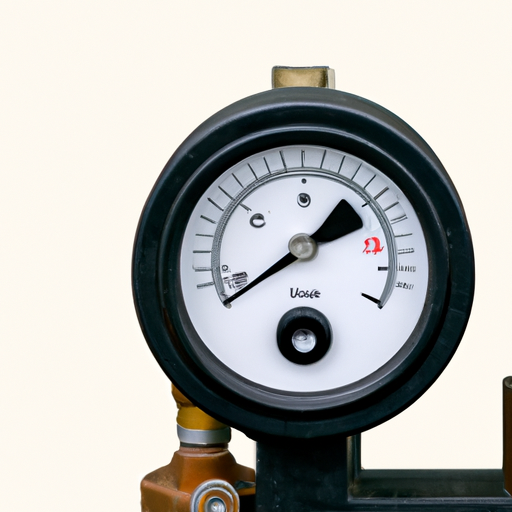
Rotating potential meters, also known as rotary potentiometers or rotary variable resistors, are widely used in various electronic devices and equipment to control and adjust voltage levels. These devices are essential components in many applications, including audio equipment, lighting controls, industrial machinery, and automotive systems. Rotating potential meters come in various types and configurations to suit different requirements and specifications. In this article, we will explore some of the popular rotating potential meter product types available in the market.1. Single-turn Potentiometers:
Single-turn potentiometers are the most common type of rotating potential meters. They have a single rotating shaft that can be turned through a full 360-degree rotation. These potentiometers are typically used for simple voltage control applications where precise adjustments are not required. Single-turn potentiometers are available in various resistance values and power ratings to suit different applications.2. Multi-turn Potentiometers:
Multi-turn potentiometers have multiple turns of the rotating shaft, allowing for more precise adjustments of voltage levels. These potentiometers typically have a gear mechanism that translates multiple rotations of the shaft into a linear output. Multi-turn potentiometers are commonly used in applications where fine adjustments are required, such as in precision instruments and test equipment.3. Wirewound Potentiometers:
Wirewound potentiometers use a wire wound around a resistive core to provide a precise and stable resistance value. These potentiometers are known for their high accuracy and reliability, making them suitable for demanding applications where precise voltage control is essential. Wirewound potentiometers are commonly used in industrial control systems, power supplies, and instrumentation.4. Cermet Potentiometers:
Cermet potentiometers use a ceramic and metal composite material for the resistive element, providing excellent stability and reliability. These potentiometers offer high precision and long-term stability, making them ideal for applications where accuracy is critical. Cermet potentiometers are commonly used in audio equipment, medical devices, and aerospace applications.5. Conductive Plastic Potentiometers:
Conductive plastic potentiometers use a conductive plastic material for the resistive element, offering low noise and high resolution. These potentiometers are known for their smooth and precise operation, making them suitable for audio equipment, automotive controls, and consumer electronics. Conductive plastic potentiometers are available in various resistance values and power ratings to suit different applications.6. Digital Potentiometers:
Digital potentiometers, also known as digital potentiometer ICs, use digital encoding to adjust the resistance value electronically. These potentiometers offer precise and repeatable adjustments of voltage levels, making them ideal for applications where digital control is required. Digital potentiometers are commonly used in audio equipment, motor controls, and programmable logic controllers.7. Motorized Potentiometers:
Motorized potentiometers use a motor-driven mechanism to adjust the resistance value remotely. These potentiometers offer remote control and automation capabilities, making them suitable for applications where manual adjustments are not practical. Motorized potentiometers are commonly used in audio mixing consoles, robotic systems, and industrial automation.In conclusion, rotating potential meters come in various types and configurations to suit different requirements and specifications. Whether you need a simple single-turn potentiometer for basic voltage control or a high-precision wirewound potentiometer for demanding applications, there is a wide range of rotating potential meter product types available in the market to meet your needs. It is essential to choose the right type of potentiometer based on your specific application requirements to ensure optimal performance and reliability.
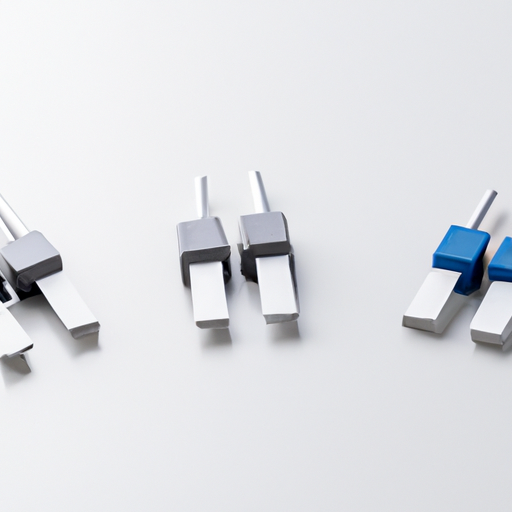
Adjustable power resistors are essential components in various electronic circuits and systems, providing precise control over the amount of electrical resistance in a circuit. These resistors are commonly used in applications where the resistance needs to be adjusted to achieve specific performance requirements. There are several popular types of adjustable power resistors available on the market, each with its own unique features and benefits. In this article, we will explore some of the most popular types of adjustable power resistors and their applications.1. PotentiometersPotentiometers, also known as pots, are one of the most common types of adjustable power resistors. They consist of a resistive element with a movable contact that can be adjusted to change the resistance value. Potentiometers are available in various configurations, including single-turn and multi-turn versions. Single-turn potentiometers are typically used for applications where a simple adjustment is required, while multi-turn potentiometers offer finer control over the resistance value.Potentiometers are widely used in audio equipment, lighting controls, and instrumentation applications. They are also commonly used in voltage divider circuits to provide variable output voltages. Potentiometers are available in different resistance values and power ratings to suit a wide range of applications.2. RheostatsRheostats are another popular type of adjustable power resistor that is commonly used in high-power applications. They consist of a resistive element with a sliding contact that can be adjusted to vary the resistance value. Rheostats are typically used in circuits where a variable load is required, such as motor speed control, heating elements, and power supplies.Rheostats are available in various configurations, including wire-wound and carbon composition types. Wire-wound rheostats are suitable for high-power applications due to their ability to dissipate heat effectively, while carbon composition rheostats are commonly used in low-power applications. Rheostats are available in different resistance values and power ratings to meet the specific requirements of different applications.3. TrimmersTrimmers, also known as trimmer potentiometers, are miniature adjustable power resistors that are used for fine-tuning the resistance value in electronic circuits. Trimmers are typically mounted directly on the circuit board and are adjusted using a small screwdriver or a knob. Trimmers are available in various configurations, including single-turn and multi-turn versions.Trimmers are commonly used in applications where precise adjustment is required, such as in calibration circuits, tuning circuits, and sensor applications. Trimmers are available in different resistance values and power ratings to suit a wide range of applications.4. Variable resistorsVariable resistors are adjustable power resistors that are used to vary the resistance value in a circuit. They consist of a resistive element with a movable contact that can be adjusted to change the resistance value. Variable resistors are available in various configurations, including rotary and slide types.Variable resistors are commonly used in applications where a variable resistance is required, such as in volume controls, tone controls, and dimmer switches. Variable resistors are available in different resistance values and power ratings to meet the specific requirements of different applications.5. Digital potentiometersDigital potentiometers are a modern type of adjustable power resistor that uses digital control to adjust the resistance value. They consist of a resistive element with digital control circuitry that allows the resistance value to be adjusted using digital signals. Digital potentiometers are available in various configurations, including single-channel and multi-channel versions.Digital potentiometers are commonly used in applications where precise digital control is required, such as in digital audio equipment, programmable power supplies, and motor control systems. Digital potentiometers offer several advantages over traditional potentiometers, including higher precision, faster response times, and remote control capabilities.In conclusion, adjustable power resistors are essential components in electronic circuits and systems, providing precise control over the amount of electrical resistance in a circuit. There are several popular types of adjustable power resistors available on the market, each with its own unique features and benefits. Whether you need a potentiometer for audio equipment, a rheostat for motor speed control, a trimmer for calibration circuits, a variable resistor for volume controls, or a digital potentiometer for digital audio equipment, there is a wide range of options to choose from to meet your specific requirements.
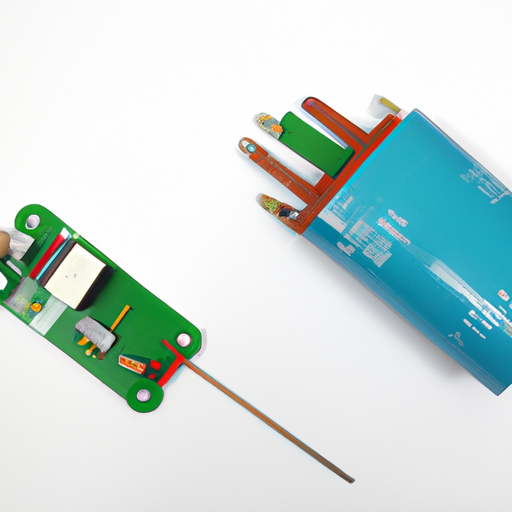
Adjustable power resistors are a crucial component in many electronic devices and systems, providing the ability to control the flow of electricity and manage power levels. As such, the market for adjustable power resistors is a competitive and dynamic one, with various market policies and strategies in place to ensure fair competition and promote innovation.One of the key market policies for adjustable power resistors is quality control and certification. In order to ensure that adjustable power resistors meet industry standards and perform reliably, manufacturers are required to adhere to strict quality control measures and obtain certifications from regulatory bodies. This helps to build trust among consumers and ensures that adjustable power resistors are safe and effective for use in various applications.Another important market policy for adjustable power resistors is pricing and competition. With a wide range of manufacturers and suppliers in the market, pricing can vary significantly depending on factors such as quality, brand reputation, and features. To remain competitive, manufacturers must constantly monitor market trends and adjust their pricing strategies accordingly. This can include offering discounts, promotions, and incentives to attract customers and gain market share.In addition to pricing, manufacturers of adjustable power resistors must also focus on product differentiation and innovation. With advancements in technology and changing customer demands, it is important for manufacturers to continuously improve their products and offer new features and capabilities. This can help to differentiate their products from competitors and attract customers looking for the latest and most advanced adjustable power resistors.Market policies also play a role in distribution and sales channels for adjustable power resistors. Manufacturers must carefully consider their distribution strategies, including whether to sell directly to customers or through distributors and retailers. Each approach has its own advantages and challenges, and manufacturers must weigh these factors to determine the most effective distribution strategy for their products.Furthermore, market policies for adjustable power resistors also include regulations and compliance requirements. Manufacturers must ensure that their products meet all relevant safety and environmental standards, as well as comply with any industry-specific regulations. This can involve testing and certification processes, as well as ongoing monitoring and reporting to regulatory bodies.Overall, the market for adjustable power resistors is a complex and competitive one, with various market policies and strategies in place to ensure fair competition and promote innovation. By focusing on quality control, pricing, product differentiation, distribution, and compliance, manufacturers can navigate the market successfully and meet the needs of customers in a rapidly evolving industry.
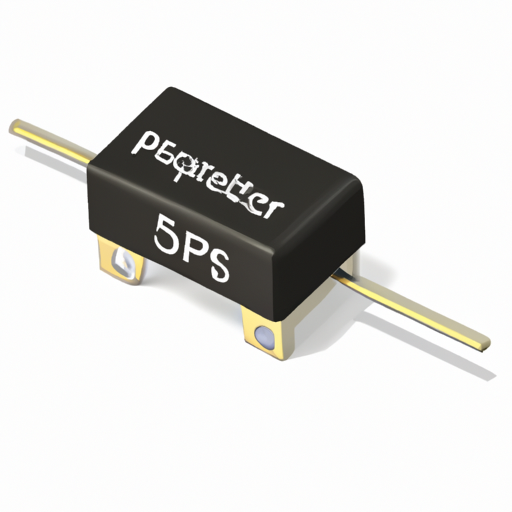
When it comes to selecting a numerical display potentiometer component for your project, there are several factors to consider. These components are commonly used in a variety of applications, including audio equipment, industrial control systems, and consumer electronics. In this article, we will discuss the key features to look for in a numerical display potentiometer, as well as provide recommendations for some top-class components on the market.Key Features to Consider:1. Resolution: The resolution of a numerical display potentiometer refers to the number of digits displayed on the screen. Higher resolution displays provide more precise control over the potentiometer's settings, making them ideal for applications where accuracy is critical.2. Interface: Some numerical display potentiometers come with built-in interfaces, such as SPI or I2C, which allow for easy communication with microcontrollers or other devices. This can simplify the integration of the potentiometer into your project and make it easier to control.3. Size and Form Factor: The size and form factor of the potentiometer are important considerations, especially if space is limited in your project. Make sure to choose a component that fits within the constraints of your design.4. Durability: Look for a numerical display potentiometer that is built to last, with a rugged construction that can withstand the rigors of daily use. Components with high-quality materials and a solid design will provide reliable performance over time.5. Cost: Consider your budget when selecting a numerical display potentiometer. While higher-priced components may offer more features and better performance, there are also budget-friendly options available that can meet your needs.Top-Class Numerical Display Potentiometer Components:1. Bourns 3590S Series: The Bourns 3590S Series is a popular choice for numerical display potentiometers, known for their high precision and reliability. These components offer a resolution of up to four digits and come in a variety of sizes and configurations to suit different applications.2. Vishay Spectrol 357 Series: The Vishay Spectrol 357 Series is another top-class option for numerical display potentiometers, featuring a durable construction and high-resolution display. These components are available in various resistance values and can be easily integrated into a wide range of projects.3. ALPS RK09 Series: The ALPS RK09 Series is a cost-effective choice for numerical display potentiometers, offering a good balance of performance and affordability. These components are available in different sizes and configurations, making them suitable for various applications.4. TT Electronics P160 Series: The TT Electronics P160 Series is a versatile option for numerical display potentiometers, with a compact design and high-resolution display. These components are easy to install and provide precise control over settings, making them ideal for a wide range of applications.In conclusion, selecting the right numerical display potentiometer component for your project is essential for achieving accurate and reliable performance. Consider the key features mentioned above, such as resolution, interface, size, durability, and cost, when choosing a component. The top-class components listed in this article, including the Bourns 3590S Series, Vishay Spectrol 357 Series, ALPS RK09 Series, and TT Electronics P160 Series, are all excellent choices for numerical display potentiometers. By carefully evaluating your requirements and selecting a high-quality component, you can ensure the success of your project.
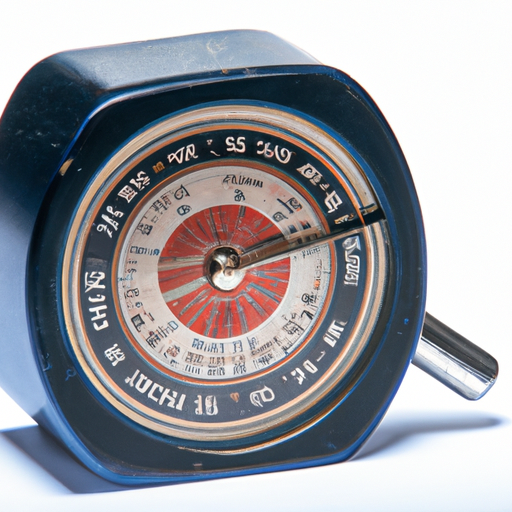
The market size of fine-tuning potential meters is a crucial factor to consider for businesses looking to enter or expand in this industry. Fine-tuning potential meters are electronic devices used to adjust and control the voltage or current in a circuit with precision. They are commonly used in a variety of industries, including telecommunications, automotive, aerospace, and consumer electronics.To determine the market size of fine-tuning potential meters, it is important to consider various factors such as the demand for these devices, the number of manufacturers and suppliers in the market, and the overall growth trends in the industry. Additionally, analyzing the market size can help businesses identify potential opportunities for growth and expansion in this sector.One of the key drivers of the market size of fine-tuning potential meters is the increasing demand for electronic devices and components in various industries. As technology continues to advance, the need for precise and reliable voltage and current control in electronic circuits is becoming more important. This has led to a growing demand for fine-tuning potential meters in industries such as telecommunications, automotive, and consumer electronics.Another factor contributing to the market size of fine-tuning potential meters is the presence of a large number of manufacturers and suppliers in the market. This competition has led to a wide range of products available to consumers, with varying features and price points. This has also led to innovation in the industry, with manufacturers constantly developing new and improved products to meet the changing needs of consumers.In addition, the overall growth trends in the industry play a significant role in determining the market size of fine-tuning potential meters. As industries such as telecommunications, automotive, and consumer electronics continue to grow, the demand for fine-tuning potential meters is expected to increase as well. This presents opportunities for businesses to enter or expand in this market and capitalize on the growing demand for these devices.Overall, the market size of fine-tuning potential meters is significant and continues to grow as the demand for electronic devices and components increases. By analyzing the market size and understanding the key drivers of growth in this industry, businesses can identify opportunities for expansion and success in the market for fine-tuning potential meters.
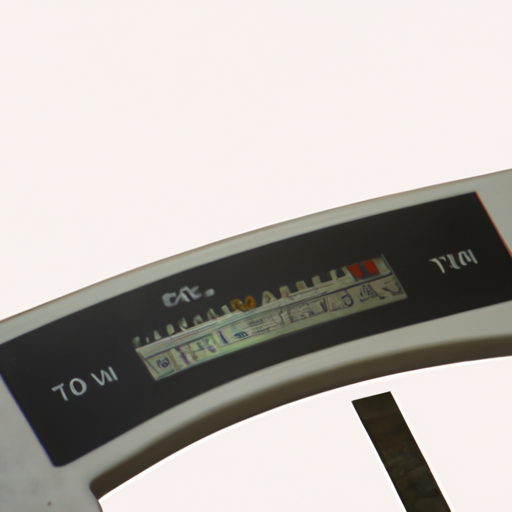
Fine-tuning potential meters are essential components in various electronic devices and equipment, allowing for precise adjustments to voltage levels. These devices are commonly used in audio equipment, telecommunications systems, and other electronic devices where accurate voltage control is necessary. In this article, we will explore the top 10 popular models of fine-tuning potential meters in the mainstream market.1. Bourns 3296 Series
The Bourns 3296 series is a popular choice for fine-tuning potential meters due to its high precision and reliability. These devices are available in various resistance values and are commonly used in audio equipment and telecommunications systems.2. Vishay Spectrol 534 Series
The Vishay Spectrol 534 series is another popular model of fine-tuning potential meters known for its high accuracy and durability. These devices are widely used in industrial applications where precise voltage control is essential.3. Murata PV36 Series
The Murata PV36 series is a top choice for fine-tuning potential meters in the mainstream market. These devices offer excellent performance and reliability, making them ideal for a wide range of electronic applications.4. TT Electronics 5306 Series
The TT Electronics 5306 series is a popular model of fine-tuning potential meters known for its high precision and stability. These devices are commonly used in audio equipment, medical devices, and other electronic applications.5. Honeywell 53C Series
The Honeywell 53C series is a top choice for fine-tuning potential meters in the mainstream market. These devices offer excellent performance and reliability, making them ideal for a wide range of electronic applications.6. TE Connectivity 534 Series
The TE Connectivity 534 series is another popular model of fine-tuning potential meters known for its high accuracy and durability. These devices are widely used in industrial applications where precise voltage control is essential.7. CTS 3296 Series
The CTS 3296 series is a top choice for fine-tuning potential meters in the mainstream market. These devices offer excellent performance and reliability, making them ideal for a wide range of electronic applications.8. Alpha Electronics 5306 Series
The Alpha Electronics 5306 series is a popular model of fine-tuning potential meters known for its high precision and stability. These devices are commonly used in audio equipment, medical devices, and other electronic applications.9. Panasonic ERJ Series
The Panasonic ERJ series is a top choice for fine-tuning potential meters in the mainstream market. These devices offer excellent performance and reliability, making them ideal for a wide range of electronic applications.10. Ohmite 534 Series
The Ohmite 534 series is another popular model of fine-tuning potential meters known for its high accuracy and durability. These devices are widely used in industrial applications where precise voltage control is essential.In conclusion, fine-tuning potential meters are essential components in various electronic devices and equipment, allowing for precise adjustments to voltage levels. The top 10 popular models of fine-tuning potential meters in the mainstream market offer high precision, reliability, and performance, making them ideal for a wide range of electronic applications. Whether you are working on audio equipment, telecommunications systems, or industrial applications, these fine-tuning potential meters are sure to meet your voltage control needs.
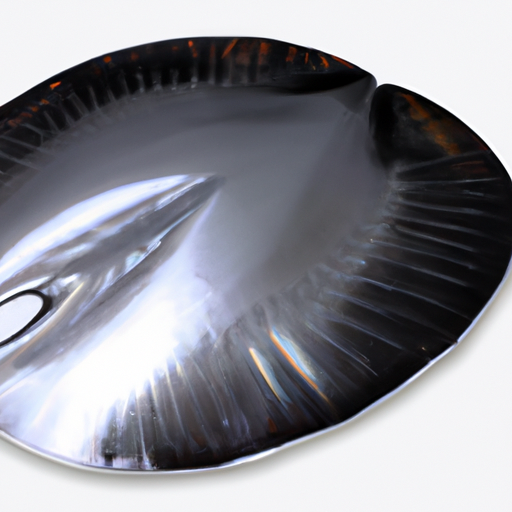
Scaled disk is a cutting-edge storage solution that offers a wide range of features to meet the needs of modern businesses. From its scalability and flexibility to its advanced data protection and management capabilities, Scaled disk is designed to provide a reliable and efficient storage solution for organizations of all sizes.One of the key features of Scaled disk is its scalability. With the ability to easily add or remove storage capacity as needed, Scaled disk can grow with your business and adapt to changing storage requirements. This scalability is essential for businesses that are experiencing rapid growth or need to accommodate fluctuating data storage needs.In addition to its scalability, Scaled disk also offers a high level of flexibility. The system can be easily customized to meet the specific needs of your organization, whether you require high-performance storage for mission-critical applications or cost-effective storage for archival purposes. This flexibility allows you to tailor the storage solution to your unique requirements, ensuring that you get the most out of your investment.Another key feature of Scaled disk is its advanced data protection capabilities. With built-in redundancy and data replication, Scaled disk ensures that your data is always safe and accessible. In the event of a hardware failure or other issue, the system can automatically failover to a secondary storage device, minimizing downtime and ensuring that your data remains secure.In addition to its data protection features, Scaled disk also offers advanced data management capabilities. The system includes tools for data deduplication, compression, and tiering, allowing you to optimize storage efficiency and reduce costs. These features help you make the most of your storage resources, ensuring that you get the best possible performance and value from your storage solution.One of the key benefits of Scaled disk is its ease of use. The system is designed to be user-friendly and intuitive, with a simple interface that makes it easy to manage and monitor your storage environment. Whether you are a seasoned IT professional or a novice user, Scaled disk is easy to deploy and manage, allowing you to focus on your core business activities without having to worry about storage issues.In addition to its ease of use, Scaled disk also offers excellent performance. The system is designed to deliver high-speed data access and low latency, ensuring that your applications run smoothly and efficiently. Whether you are running database queries, processing transactions, or accessing multimedia files, Scaled disk can handle the workload with ease, providing the performance you need to keep your business running smoothly.Overall, Scaled disk is a powerful and versatile storage solution that offers a wide range of features to meet the needs of modern businesses. From its scalability and flexibility to its advanced data protection and management capabilities, Scaled disk is designed to provide a reliable and efficient storage solution for organizations of all sizes. Whether you are a small startup or a large enterprise, Scaled disk can help you meet your storage needs and ensure that your data is always safe and accessible.